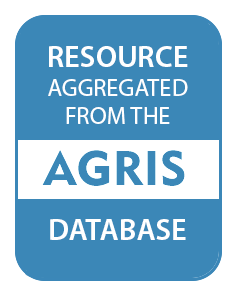What is AGRIS?
AGRIS (International System for Agricultural Science and Technology) is a global public database providing access to bibliographic information on agricultural science and technology. The database is maintained by CIARD, and its content is provided by participating institutions from all around the globe that form the network of AGRIS centers (find out more here). One of the main objectives of AGRIS is to improve the access and exchange of information serving the information-related needs of developed and developing countries on a partnership basis.
AGRIS contains over 8 million bibliographic references on agricultural research and technology & links to related data resources on the Web, like DBPedia, World Bank, Nature, FAO Fisheries and FAO Country profiles.
More specifically
AGRIS is at the same time:
A collaborative network of more than 150 institutions from 65 countries, maintained by FAO of the UN, promoting free access to agricultural information.
A multilingual bibliographic database for agricultural science, fuelled by the AGRIS network, containing records largely enhanced with AGROVOC, FAO’s multilingual thesaurus covering all areas of interest to FAO, including food, nutrition, agriculture, fisheries, forestry, environment etc.
A mash-up Web application that links the AGRIS knowledge to related Web resources using the Linked Open Data methodology to provide as much information as possible about a topic within the agricultural domain.
Opening up & enriching information on agricultural research
AGRIS’ mission is to improve the accessibility of agricultural information available on the Web by:
- Maintaining and enhancing AGRIS, a bibliographic repository for repositories related to agricultural research.
- Promoting the exchange of common standards and methodologies for bibliographic information.
- Enriching the AGRIS knowledge by linking it to other relevant resources on the Web.
AGRIS is also part of the CIARD initiative, in which CGIAR, GFAR and FAO collaborate in order to create a community for efficient knowledge sharing in agricultural research and development.
AGRIS covers the wide range of subjects related to agriculture, including forestry, animal husbandry, aquatic sciences and fisheries, human nutrition, and extension. Its content includes unique grey literature such as unpublished scientific and technical reports, theses, conference papers, government publications, and more. A growing number (around 20%) of bibliographical records have a corresponding full text document on the Web which can easily be retrieved by Google.
Members:
Resources
Displaying 3951 - 3955 of 9579Accelerating the domestication of forest trees in a changing world
In light of impending water and arable land shortages, population growth and climate change, it is more important than ever to examine how forest tree domestication can be accelerated to sustainably meet future demands for wood, biomass, paper, fuel and biomaterials. Because of long breeding cycles, tree domestication cannot be rapidly achieved through traditional genetic improvement methods alone. Integrating modern genetic and genomic techniques with conventional breeding will expedite tree domestication.
Impact of sample size allocation when using stratified random sampling to estimate accuracy and area of land-cover change
The ground reference data obtained to assess map accuracy can be simultaneously used to estimate area (extent). This dual-purpose use of ground reference data is examined for the special case of a two-class map of ‘change’ and ‘no change’. To assess the accuracy of a change map, stratified sampling is often implemented with a disproportionately larger sample size allocated to the map change stratum. But this allocation targeting user's accuracy of change is not necessarily effective for the competing objective of estimating the area of change.
Capitalization by formalization? – Challenging the current paradigm of land reforms
Most of the land reforms in developing countries in recent decades follow a blueprint that is based on the property rights theory. This blueprint was supported by Western government-backed development aid institutions and the World Bank and intends to achieve a capitalization of property rights on land by formalization and individualization. Its supporters expect higher efficiency of the land markets and higher tenure security. The focus of the article is not so much on the formalization efforts themselves, but on the capitalization of the use rights.
Measuring stock and change in the GB countryside for policy – Key findings and developments from the Countryside Survey 2007 field survey
Countryside Survey is a unique large scale long-term monitoring programme investigating stock and change of habitats, landscape features, vegetation, soil and freshwaters of Great Britain. Repeat field surveys combine policy and scientific objectives to provide evidence on how multiple aspects of the environment are changing over time, a key goal of international science in the face of profound human impacts on ecosystems.
Vegetation and Soil Seed Bank Relationships Across Microhabitats in an Abandoned Quercus suber Parkland Under Simulated Fire
Mediterranean agro-forestry systems are undergoing rapid change due to abandonment. This turns formerly cultivated or grazed oak-tree parklands (i.e., savanna-type formations called âdehesasâ) into flammable formations of scattered trees within a matrix of shrubs with open spaces. Wildfires can now occur, threatening the persistence of these formations. Fire-prone shrublands commonly regenerate after fire from seeds stored in the soil.


